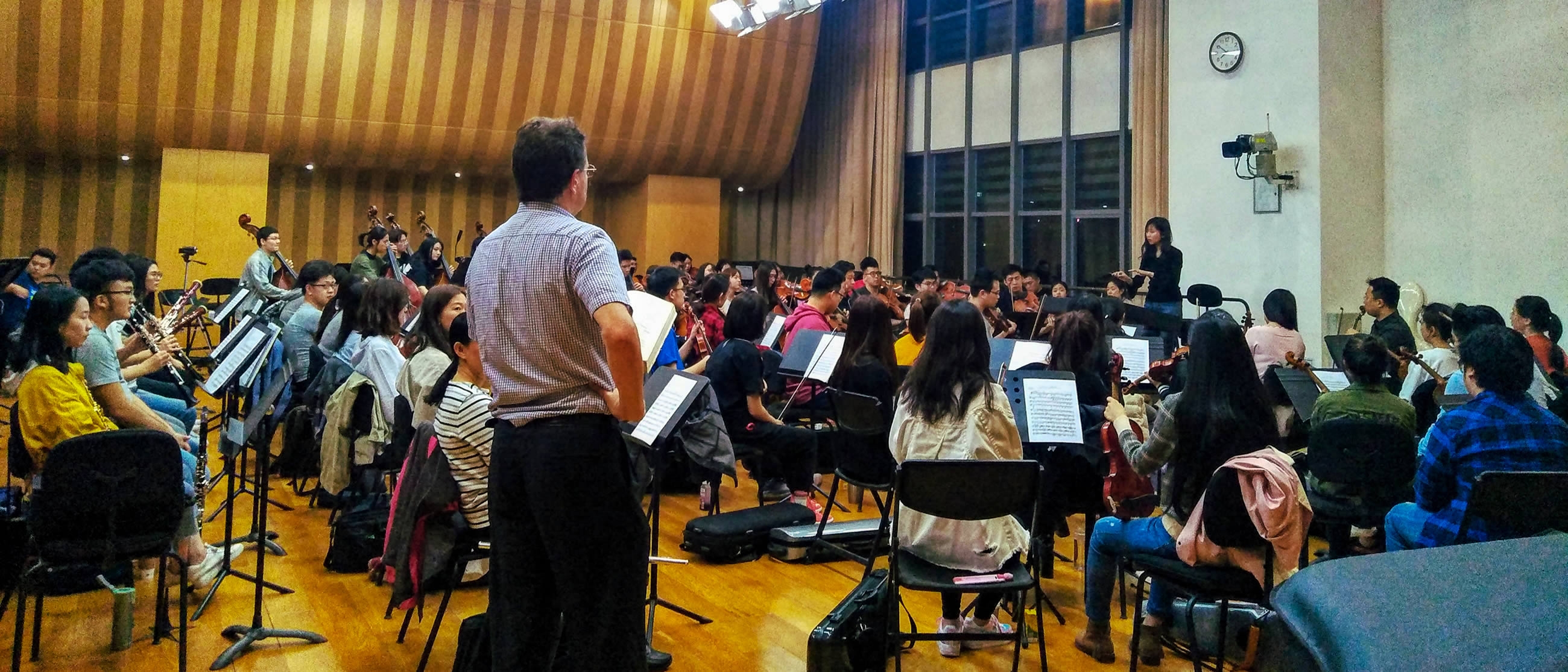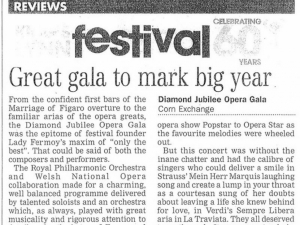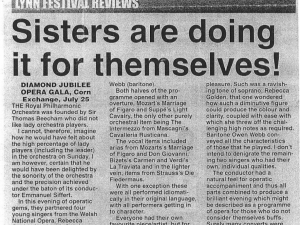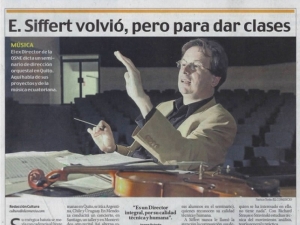Press Archive
Review CD Swiss Chamber Orchestra - Gallo : 1319.
Cet enregistrement des éditions Gallo permet d’apprécier à sa juste valeur l’Orchestre de chambre Suisse (Schweizer Kammerorchester) qui, dès les premières mesures, propose une version entraînante et irrésistible du Divertimento pour cordes de Béla Bartók (1881-1945), en 3 mouvements (avec un Adagio très expressif entouré de deux Allegro bien enlevés). L’excellent altiste Hugo Bollschweiler s’impose par son extrême justesse et sa musicalité dans Love is in the air du compositeur suisse, Rolf Urs Ringger (°1935), créé en 2007, page haute en couleurs, avec des tessitures très élevées pour l’instrument soliste. Cette œuvre est suivie d’un Adagio Celeste pour cordes du musicien finlandais Einojuhani Rautavaara (°1928), créé à Helsinki en 2002, page lourde de mysticisme, spéculant sur les oppositions de couleurs et le contraste en hésitation et accélération. Œuvre à retenir. Enfin, cette gravure se termine sur la Symphonie n°5 en sib majeur, D 485, de Franz Schubert. Excellent programme proposé par Emmanuel Siffert, remarquable chef de réputation internationale.
Edith Weber
NAXOS CD
For some reason, the violin continues to garner a growing repertoire of concerti. Many derive from the contact of their composers with fine soloists who provide the inspiration and immediate feedback that shapes the music. When these collaborations work well, the result is an often engaging piece, often highly expressive, regardless of the language of its composer. David Gompper’s new concerto may just find a way to enter the repertoire over time with its accessible language and dramatic writing reminiscent of Dutilleux and Rihm, and even a little Penderecki at times, though these are mere reference points to help encourage pursuit of this latest disc featuring four of his works, three of them featuring violin. Gompper’s music is featured on a number of recordings and continues to find performances internationally. This new Naxos disc will provide some wider exposure to his work opening with the strongest, and most accessible of the four pieces presented here. The Violin Concerto has had a long gestation period and grew out of the composer’s work with its dedicatee, Wolfgang David, who performs it here. Beginning as a piano and violin work, performed and adjusted over a few years, the piece was finally orchestrated. The musical ideas grew out of Gomper’s thinking about echoes heard in the mountains though that inspiration may be set aside to enter into the work in a more abstract way. The opening “Vivace, Fuoco” begins with a rather intense, and at times vicious sense that is met with interesting orchestral accents. The violin solo floats well over the orchestral textures. Gomper’s music floats well between more atonal and angular lines and music that flirts with romanticism. The latter comes into play in a brief quieter section, a possible hint at the second movement’s quieter reflection. Calls and answers of motives are tossed throughout the texture as well while the solo wanders about through the interesting colors. The central movement is cast in those long lyrical reflections that work to provide contrast. There are some quite colorful climaxes that are quite beautiful cast against the expressive solo line. A cadenza revisits some of the motivic development of the piece providing some solo displays before the brief final “Presto.” David’s performance is committed and this concerto displays his technique in faster passages but highlights his expressive playing quite well. There are some sections of angular passages that he manages with great ease, or at least makes it sound as such! The work Ikon (2008) takes its name, and inspiration from a 19th-century Russian house icon viewed by the composer while in Estonia. Gompper’s compositional challenge was to find a way to depict musically the concept of proportional placement of sound the way images are presented in iconographic art. Pitch areas and rhythmic patterns are what helps to create the aural sensation of shapes within the texture here and while the concept of the music may be a bit too cerebral to catch in a first hearing, the language is accessible enough to enjoy the different colors Gompper draws from the orchestra. The solo instrument tends to present the rhythmic motifs that are then commented on by the orchestra in unusual ways. Ikon might work better on its own, it pales a bit after the stronger concerto, but can be hard as an earlier approach to writing for violin and orchestra that would flower more extensively in the opening work on this disc. The concluding work on the disc, Spirals, applies the Fibonacci series to all parameters of the music, discussed briefly in the composer’s accompanying program note. This work has appeared on disc before, though no doubt is receiving a definitive recorded performance here. Cast for two violins and orchestra, Spirals tends to focus more on rhythmic presentation of its soloists maintaining what sounds like a far more active harmonic backdrop than actually is in existence. The music has the sort of longer lyric violin lines in conversation with a variety of pointillistic support from the orchestra. Of interest to film music fans, Flip (1993), is a string piece that plays with the ideas of “flipping” musical material throughout the orchestra. It also includes “borrowed” music quotations from the TV series Flipper and the samba from Brazil. The music plays with the interpretation of “flipping” from innocuous dance flips to the more slang finger-inducing production and its immediate, unknown response. The music moves then in fits and starts with a lot of denser textures. In lieu of the other works included on the disc, this one is a good reminder of other non-minimalist musical directions that were occurring in music some 20 years ago as composers explored ways to create dramatic works in more harsh, atonal, soundscapes paralleled in works by Ligeti. The shift between pizzicato and bowing in the strings is also a great dramatic tool that makes the music interesting. The music is engaging from this perspective and must be interesting to watch as the orchestra responds to the various ideas tossed about. The concerto is a great introduction to Gompper’s music with the rest of the pieces merely allowing more exposure to his atonal and lyrical writing. The focus on violin works alone may limit its appeal only slightly, but the pieces that accompany the concerto are all fascinating works taken on their own. It is perhaps preferable to have a disc devoted to a single composer’s works than what can happen if more than one “new” concerto appears as ones preferences may lead to appreciation of one over the other. Here, there is no competition in being able to access Gompper’s style and the more mathematically-inspired pieces still work well. The Royal Philharmonic is in top form for these pieces that feel as if they have been explored well in preparation for this recording. The sound of the recording is simply marvelous capturing the ambience of Henry Wood Hall quite well. | |
LE NOZZE DI FIGARO di Mozart al Teatro Superga di Nichelino
Una bellissima edizione, una delle migliori che io ricordi dal vivo (e ne ho viste davvero tante, Salisburgo incluso). Merito principale, secondo me, dell’eccellente direttore d’orchestra Emmanuel Siffert, svizzero, formatosi con Sandor Vegh a Salzburg e successivamente con Horst Stein, Ralf Weikart, Jorma Panula e Carlo Maria Giulini, ha Mozart nel DNA e lo ha dimostrato con una performance modello di eleganza, finezza, stile.
Wanderer's Blog
Roberto Mastrosimone
downloadable documentsAlla scoperta della musica sudamericana
Allievo di Carlo Maria Giulini, Emmanuerl Siffert è sicuro uno dei più interessanti direttori svizzeri della giovane generazione.
Zeno Gabaglio
downloadable documents
 English
English Deutsch
Deutsch Français
Français Español
Español


